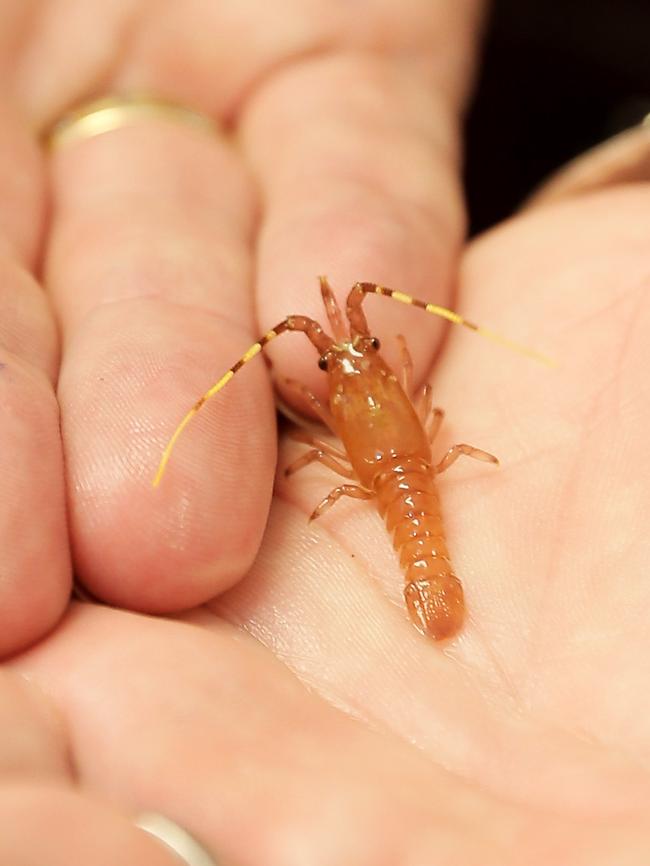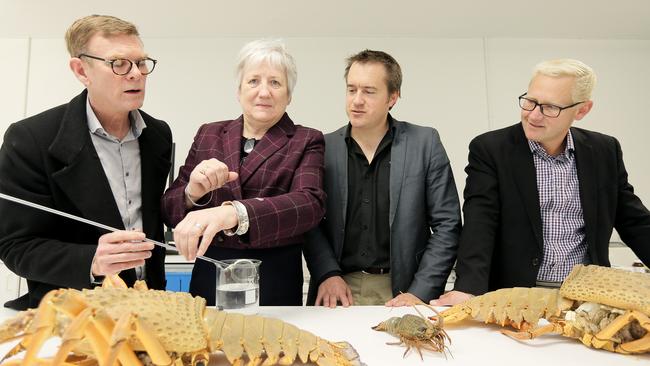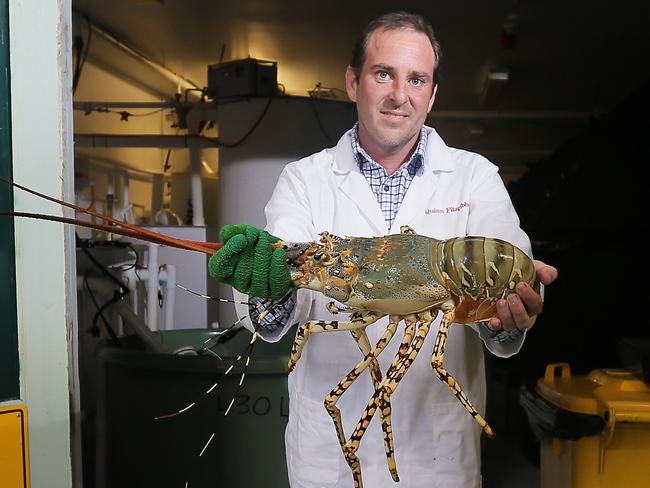Tasmanian scientists in world-first lobster breakthrough
A HISTORIC $10 million deal to build a lobster hatchery in Tasmania is expected to bring commercial lobster to the world.
Tasmania
Don't miss out on the headlines from Tasmania. Followed categories will be added to My News.
A HISTORIC $10 million deal to build a lobster hatchery in Tasmania is expected to bring commercial lobster to the world.
Tasmania is set to become the site of the world’s first commercial rock lobster hatchery after a deal between the University of Tasmania and local manufacturer PFG Group.
It comes after a scientific breakthrough regarding a lobster’s lifecycle by researchers at the university’s Institute for Marine and Antarctic Studies.
Despite the high value of rock lobsters, until now the long and complex life cycle has made it impossible to produce the species in a commercially scalable hatchery.
Director of the research program Associate Professor Greg Smith said: “No one has been able to go to the next step and actually take it to a commercial-sized scale that you can roll out and build an industry around.”


PFG chief executive Michael Sylvester said the partnership would see Tasmania become the base for the industry to expand worldwide.
“We get a real opportunity as a Tasmanian manufacturer to move our position in the value chain and commercialise world-class science that’s being developed here with IMAS in Tasmania,” he said.
PFG will work with IMAS researchers to finalise the research process over the next two years, with the juvenile hatchery expected to be completed by 2021.
“This is a big commitment for us, but we certainly think it’s the right move to make,” said Mr Sylvester.
Prof Smith said rearing rock lobster had long proven difficult due to their complex larval cycle, but the dedication from IMAS had helped identify the issues.
“So you’ve got good water, good food and good hygiene practices, you end up with lots of good larvae at the end of it,” said Professor Smith.

UTAS Deputy Vice-Chancellor for Research Professor Brigid Heywood said the long and tortuous process had been in development for 15 years.
“I think first of all this speaks to the commitment of the university around aquaculture that’s relevant to Tasmania and Australia,” she said.
Professor Heywood views the breakthrough as a moment in history that will prove beneficial on a global scale.
“The fact that we can now produce lobster in a closed-loop system on land without having to increasingly remove organisms from the wild in order to satisfy demand, that’s the moment in history,” she said.
“PFG have committed to being a commercial partner to see a new business created here today, and for us the footprint of that is food security, biosecurity and sustainability.”
Connor Munnings is a UTAS journalism student.



